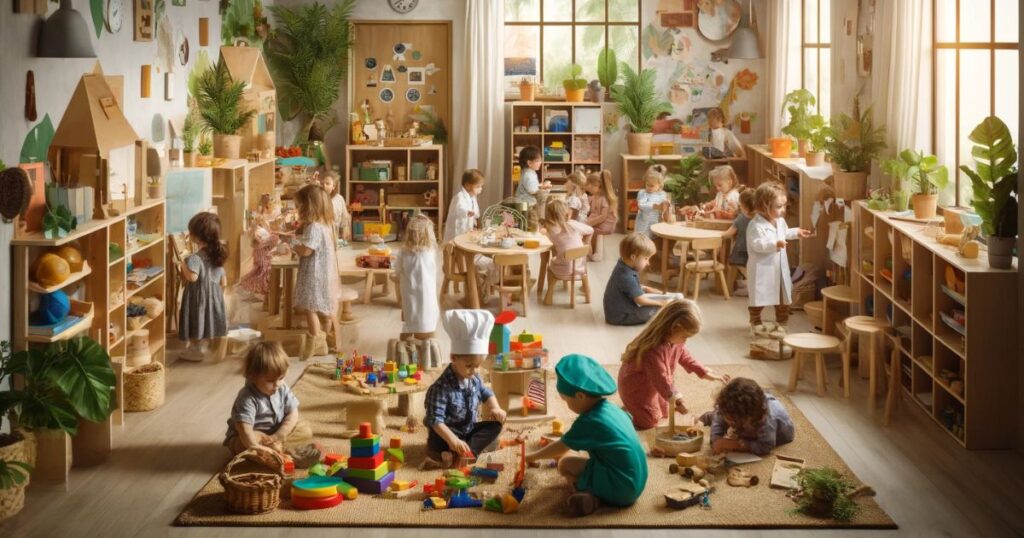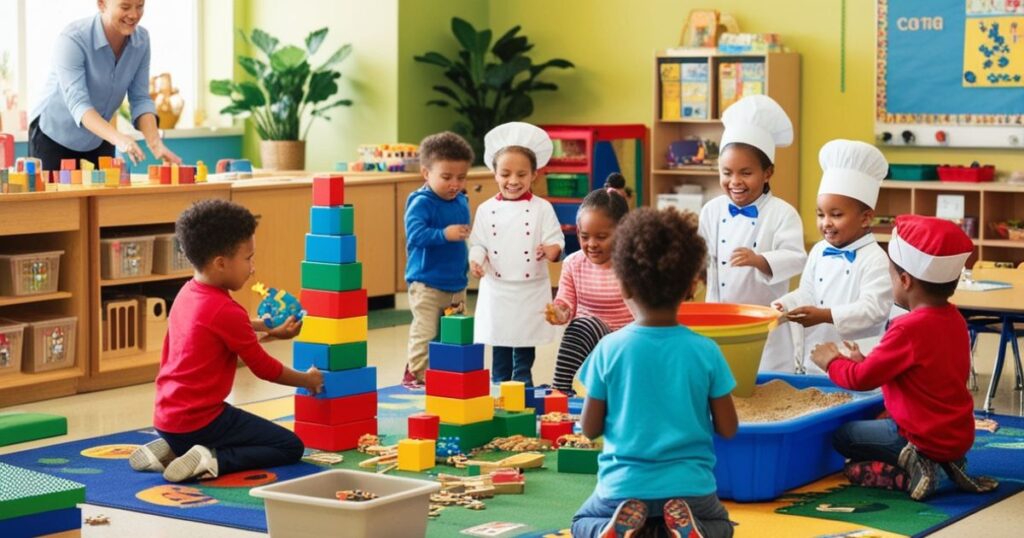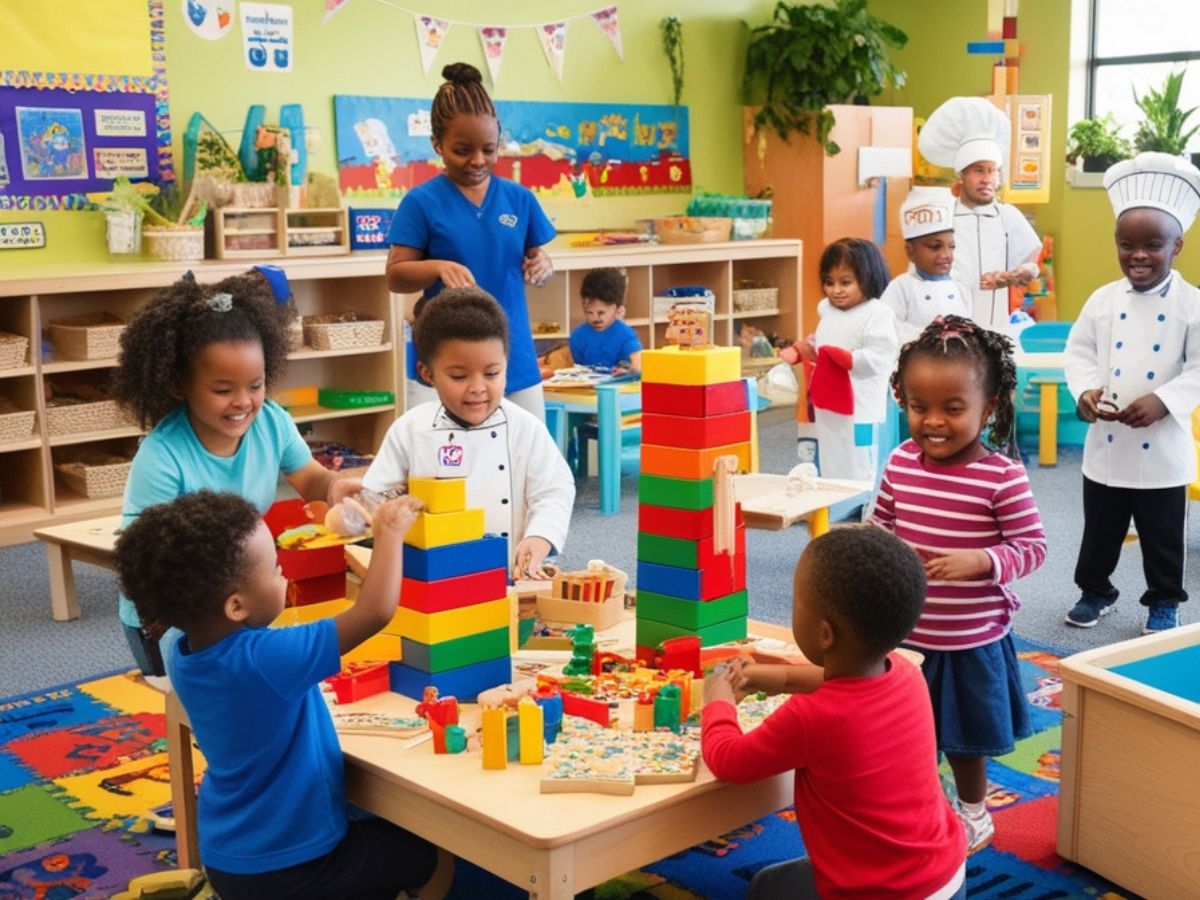Introduction
Play is such a highly valued event in early childhood education because, while re-creative or play-like in form, children get engaged with their world more purposefully in this empirical way than they would if they were just playing. Children get to learn about their environment, new ideas, and social and cognitive skills in that manner. In this article, I would like to explain the benefits of play in early childhood education and the details concerning the importance of child development through play, what aspects play-free and imaginative play has, and how play can be used to design a learning environment.
This article seeks to look at the role that play has in the development of a child.
The core of child development is play because it impacts growth in virtually all areas: cognitive functioning, motor activity, social interaction and internal state of feeling. Here’s a closer look at how play contributes to each of those:
Cognitive Development:
Play meets cognitive growth where problem solving comes into play and creativity including memory as well is enhanced. Saying constructions, matching pieces, and different types of puzzles stimulate the development of children’s brain. It helps them to think logically and to concentrate more.
Gross Motor Development
Playing moving, for example, running, climbing or jumping enhances coordination, balance and basically motor skills. Sensory motor (to run or to skip) and manipulation motor (to draw or to construct using blocks) that is essential in the entire motor play.
Social and Emotional Development:
Children develop their ability to communicate, share and coordinate their activities, negotiate, and, if some conflict arises in the course of the game, solve it. Kids who are in groups have chances to do empathy, patience and sharing which are such important qualities for social relations throughout the time.
Language Development:
Play fosters and promotes the language development of the children. Children playing at play or playing with words require language to narrate, question, recount, and tell a story and thereby bolster their language and literacy.
Emotional Well-being:
By play, children can come out with different emotions and counter with different feelings as well. For instance, if a child pretends to role play as a doctor, then he or she has undergone a session with a doctor…some of the fears that are elicited during a session with the doctor are at least in part decreased.
Importance of Play in Early Childhood Education

Loose parts and complex or fancy play are at the very core of play-based learning; more specifically, these empower children with knowledge, and skills that let them try out ideas, and establish and develop concepts in context, and an environment with the unstructured, free-form format. A few of the advantages include the following:
1. Fosters Creativity and Imagination:
During pretend play, children can pretend and generate new stories, design games out of thin air or make some object using whatever they find around them. Socio-dramatic play, such as play–chef or play astronaut will help the child develop ideas and broaden his/her or her ideas on different roles and events.
2. Inspires Independence and Decision Making
In this case, in unstructured play, the child implements choices, rules and decisions regarding an action. Such type of self-play is believed to improve self-assertion and self-reliance. Decision-making skills are also developed in the course of self-directed play, and the child knows the consequences of their actions.

3. Encourages Problem-Solving Skills
While unstructured and imaginative play includes experimenting and solving problems, For example, during the construction of a fort, the child is likely to face challenges which he or she has to solve. It is important since such play promotes the creation of resilience, the capability to adapt, and strong problem-solving skills.
4. Develops Social Skills and Empathy
At the end of the process, children learn social skills and negotiation as well as the value of empathy as they learn to share and then play with their partners in free-for-all play. Socio-dramatic plays where children pretend to be persons that they do not assist develop their perspective-taking ability.
4. Supports Physical Health
Free play is commonly characterized by intense body motions and this is Summer time favorable for children’s growth and exercise. Running, climbing and jumping can help in building muscles, balancing skills and getting cardiovascular fitness.
Tips for Creating a Play-Based Learning Environment

This offers creativity, curiosity and participation and is among the most effective environments for young learning. Here are a few tips to create such an environment:
Design Flexible Spaces
Design to enable physical changes of blocks of learning areas in a way that can easily be transformed to cater for various forms of play. The option to play actively should be followed by a soft deck that children can read or solve riddles quietly.
Incorporate Natural Elements
Create possibilities of everyday and natural shapes Natural shapes like rocks, leaves, sand and water toys will foster the sense of children. Having plants, sandboxes, and water tables to encourage children’s exploration is always great, and they promote an outburst of imaginative play.
Provide Open Materials
These include; building blocks, art materials, costumes, musical instruments. Free materials lets the pupil be inventive, to try out and have fun in an environment that is rich in variation but scarce in structure and definite lines of business.
Promote Safety and Accessibility
Make sure the play facility for young children is safe and ideally located in an implemental area. Soft surfaces, sturdy equipment, and materials appropriate for the age help free choices of such children with lesser hazards.
Facilitate Child-Led Play
Let children decide as to what they want to do during their playtime and allow them to be in charge of their peers. Only teachers and caregivers should watch and facilitate since such a move empowers children to take control of learning experiences.
Use of Technology
It would serve the appropriate need of play type. Digital storybooks, educational games, and content as learning applications in an interactive mode can be in addition to the activities.
Themes and Role-Playing
Some of the available theme play areas include pretend grocery store such as an animal clinic whereby different children will use this as a hint as to engage in role play as well as collaborative major play. All such settings help in social and language development especially for children besides offering creative imagination chance.
Encourage Outdoor Play
Engaging in outdoor play an open area is provided where the children can play, run around and act on the environment. Outdoor activities are good for the well-being of kids and help them develop skills through various terrains and climate and through touch and sight that exist in the outside world.
Conclusion
Play is not only fun but also an important factor in learning and teaches many areas of development applicable in early learning years. Play helps child to develop his or her cognitive, physical, social and emotional development, thus preparing him or her for a lifetime education. Finally, unstructured and imaginative plays are incomparable since they stick to the highest benefits such as enhancing creativity, personal decision making, empathy and building resilience in children.
Play-based learning environments are required for the learning-teaching process. Effective observation and documentation of the child’s learning and development can be supported by six aspects: Use of space, kinds of materials available that the child can use during activity, and child-initiated events.
You may also like to read:- How to Promote Equity in the Classroom for Student Success
Effective Classroom Management Strategies for New Teachers
Diversity in the Classroom | How to Foster Inclusion?
4 Types of Learning Styles | How to Teach Them
- How to Dominate Your Online Business With 5 Proven Digital Marketing Strategies
- How to Cultivate Critical Thinking and Problem-Solving Skills in Classroom
- Top Proven Mental Health Strategies for Schools in 2025-26
- Time Management for Teachers: How to Plan, Prioritize, and Perform Better
- How Parental Involvement in Education Shapes a Child’s Growth and Success
FAQ
1. Why is play important in early childhood education?
Play a crucial role because it helps to develop multiple aspects of children. It improves thinking, interactive, emotional, and motor processes and promotes imagination, critical thinking, and professional communication while providing the foundation of learning throughout a term.
2. What are the benefits of unstructured play for children?
Free play gives children the chance to pursue activities that are meaningful to them and yet they make some choices all by themselves. This learning style also fosters problem solving skills and flexibility, emotional as well as social and personal coping strategies, as well as teamwork.
3. How does imaginative play contribute to a child’s development?
Symbolic play fosters the abilities of children in understanding emotions and emerging vocabulary and creativity. By assuming certain roles they figure out how people with other roles are different, gain experience in narration, and develop empathy in them.
4. What are some examples of play-based learning activities?
Some of the examples of play based activities are: Building with blocks, Role play, playing in and around the community, sand and water play and painting or drawing. These activities are fun and engaging in order to support learning.
5. How can educators create a play-based learning environment?
Pre-school teachers can easily plan for free space and put various items such as puzzles, costumes, and arts, and make sure that children do not hurt themselves, support children to contribute to what they need and include nature in their learning. It also can include separate areas for thematic and role play, as well as the playschool children’s cooperative play.



